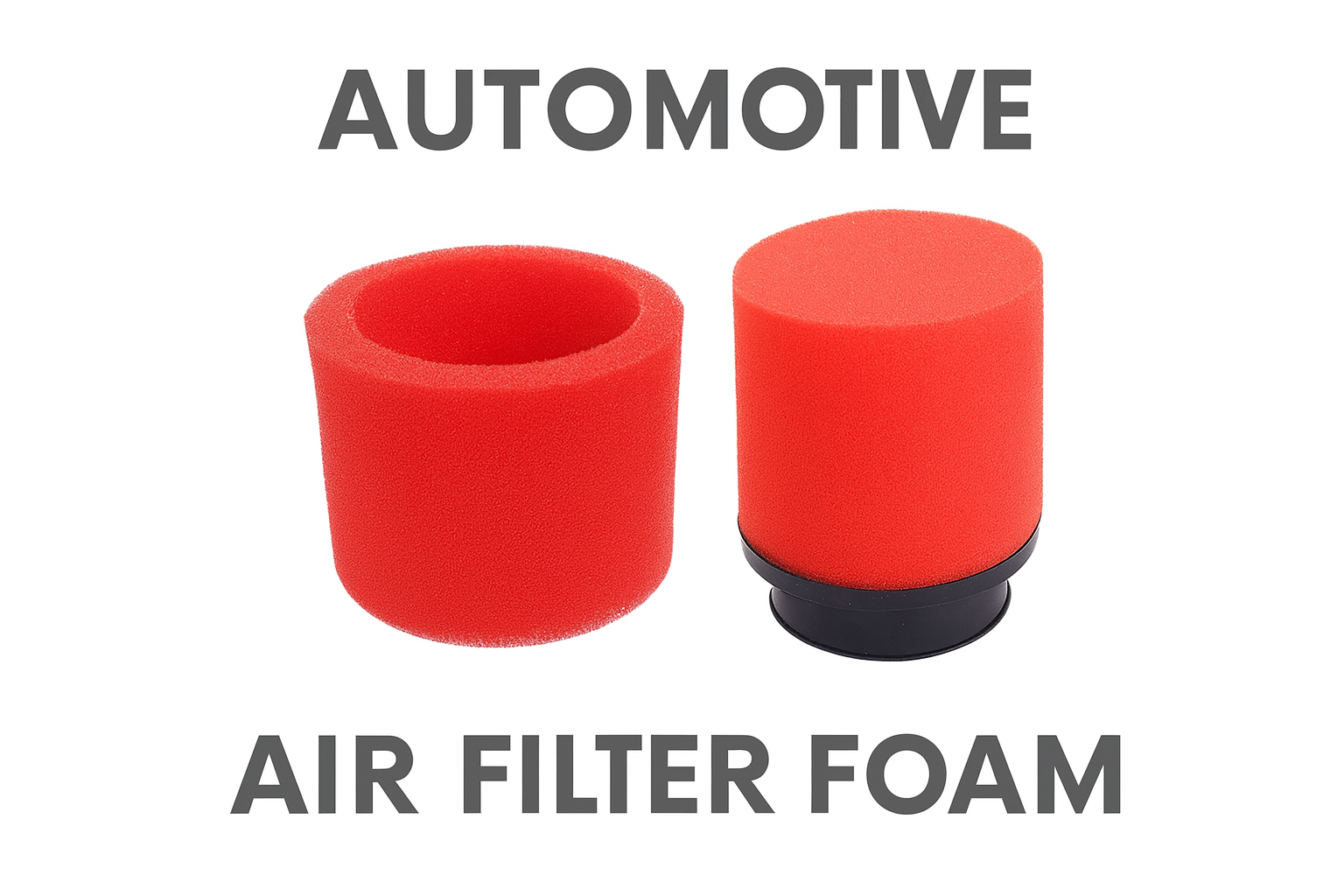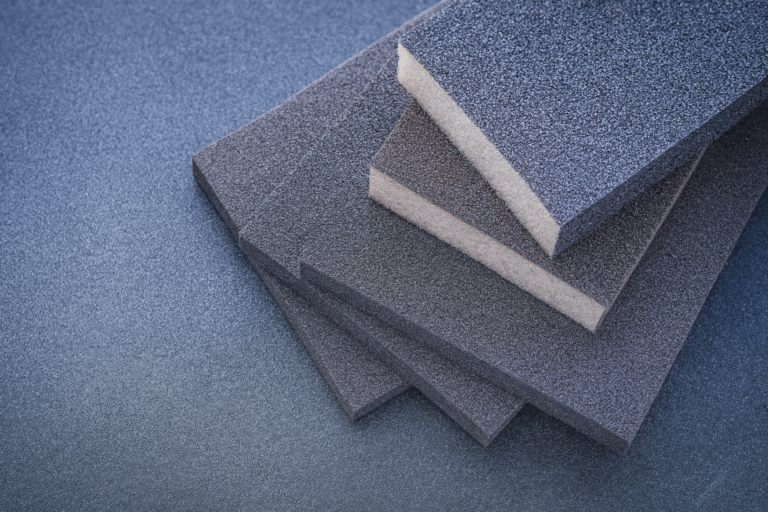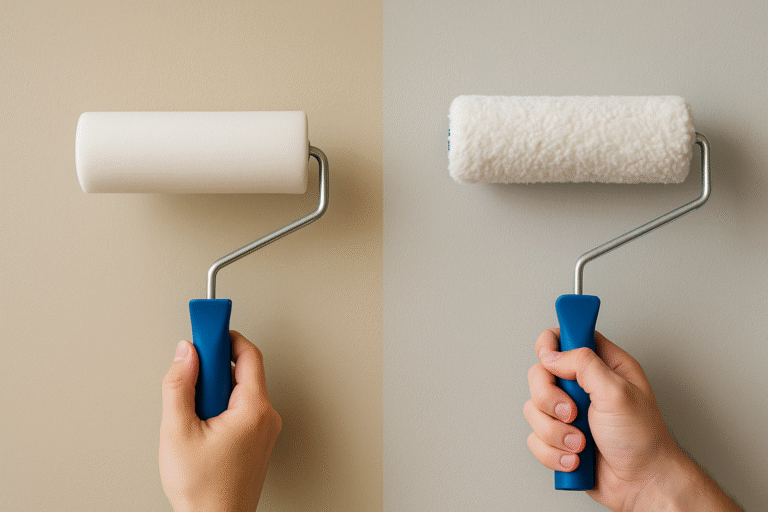Introduction
Choosing the right paint roller isn’t just about convenience, it can completely change how smooth and professional your walls, furniture, or cabinets look. The two most common options are foam (sponge) rollers and fabric rollers, but they’re not interchangeable. Foam rollers are ideal for sleek finishes on smooth surfaces, while fabric rollers are built for speed and coverage on walls and ceilings.
In this guide, we’ll break down the differences between foam and fabric paint rollers, their pros and cons, the best surfaces and paint types for each, and practical tips for cleaning and reusing them. By the end, you’ll know exactly which roller is right for your project.
What is a Foam Paint Roller?
A foam paint roller, often called a paint roller sponge is made of dense sponge material that’s designed to deliver a sleek, bubble-free finish.
Unlike fabric rollers, which are designed to hold more paint and cover larger areas, foam rollers excel at precision painting on smooth, flat surfaces. If you’re working on wooden doors, cabinets, furniture, trims, or metal surfaces, a foam roller is your best friend. The sponge absorbs paint evenly and then releases it in a thin, controlled layer, ensuring you don’t end up with streaks or brush marks.
Foam rollers are especially effective with oil-based paints, gloss finishes, and varnishes, which require an even coat to look good. Many DIYers also use sponge rollers for craft projects and stenciling because they’re lightweight and easy to control.
However, foam rollers aren’t built for every surface. On rough or textured walls, the sponge tends to tear or leave an inconsistent finish. They also wear out faster than fabric rollers and may not hold up well against strong solvents.
What is a Fabric Paint Roller?
A fabric paint roller is the more traditional, versatile roller most people are familiar with. Instead of sponge, the roller cover is made from materials like microfiber, polyester, or natural wool. Each type of fabric has its own benefits – wool holds more paint and gives thicker coverage, microfiber gives a more refined finish, and polyester is durable and cost-effective.
Fabric rollers are built for bigger, more textured jobs. They’re excellent for painting walls, ceilings, and large areas where coverage and speed matter more than a polished, glassy finish. Because fabric rollers can hold more paint than foam rollers, you don’t need to keep dipping them into the tray as often, which saves both time and effort.
Another major advantage is that they’re reusable. With proper cleaning, a good fabric roller can last through multiple painting projects, making it a cost-effective choice for homeowners and professionals alike. They also work best with water-based paints such as emulsion or latex, which are commonly used for walls and ceilings.
On the downside, low-quality fabric rollers may shed lint into the paint finish if they aren’t made well. That’s why investing in a decent-quality roller is important for a professional look.
Fabric paint rollers are your best option when you’re painting larger or textured surfaces, want efficiency, and prefer a tool that will last longer with proper care.
Key Differences Between Foam and Fabric Paint Rollers
| Feature | Foam Paint Roller (Sponge) | Fabric Paint Roller |
| Material | Dense sponge foam | Wool, microfiber, or polyester |
| Best For | Smooth, flat surfaces (wood, metal, furniture) | Large, textured, or rough surfaces (walls, ceilings) |
| Paint Compatibility | Oil-based paints, gloss, varnish | Water-based paints (latex, emulsion) |
| Finish Quality | Sleek, bubble-free, polished | Even coverage, slightly textured |
| Durability | Less durable, wears faster | Long-lasting, reusable |
| Cost | More affordable upfront | Moderate, but cost-effective over time |
When Should You Use a Sponge Paint Roller?
A sponge paint roller (foam roller) isn’t the kind of tool you’ll use for every wall in your house but when the situation calls for it, nothing else does the job better.
Think about painting a smooth wooden door or a kitchen cabinet. Using a fabric roller here might leave a faint texture or even lint on the glossy surface. A sponge roller, on the other hand, glides smoothly and lays the paint down evenly, almost like spraying. This is why professionals often reach for foam rollers when applying gloss, enamel, or varnish – any paint that demands a mirror-like finish.
They’re also incredibly handy for craft projects and decorative work. For example, when stenciling patterns on a wall, the sponge absorbs just the right amount of paint and prevents bleeding under the stencil edges. Some DIYers even use smaller sponge rollers for furniture upcycling, giving second-hand pieces a brand-new polished look.
Sponge rollers are not designed for heavy-duty coverage. If you try painting a rough concrete wall with one, you’ll quickly notice the foam tearing apart. They’re best reserved for precise, detail-oriented jobs on smooth, flat surfaces.
How to Maintain Paint Rollers (Foam & Fabric)
Most people treat paint rollers as “use and throw” tools, but with the right care, they can last through multiple projects, saving money and improving results. The cleaning process, however, is slightly different for foam and fabric rollers.
- For foam (sponge) rollers: These are delicate. After painting, roll off as much excess paint as possible onto scrap cardboard or newspaper. Then rinse the roller in warm, soapy water (for water-based paints) or mineral spirits (for oil-based paints). Don’t twist or wring the sponge too hard – it can tear. Instead, gently press it against the side of the sink or use your hand to squeeze water out in a rolling motion. Leave it standing upright to dry completely.
- For fabric rollers: These are sturdier but tend to hold more paint, which means you’ll need extra patience when cleaning them. Start by scraping off the excess paint with a putty knife or a roller scraper. Rinse under running water while squeezing and rolling the fabric until the water runs clear. For oil-based paints, you’ll need to soak the roller in thinner, then wash with warm soapy water. Let it dry vertically to keep its shape.
Extra tip: Never store a damp roller in a closed plastic bag or box. It will develop mildew and ruin the nap of the fabric or the foam texture. If you clean and dry them properly, a good fabric roller can last for months, while sponge rollers, though less durable can still be reused several times.
Conclusion
Both foam and fabric paint rollers have their place, it all depends on your project. If you’re painting smooth doors, furniture, or trim and want a glass-like finish, a foam roller is your best choice. For walls, ceilings, and textured surfaces where coverage and speed matter, go with a fabric roller.
The right tool doesn’t just save time, it improves the finish, helps your paint last longer, and makes the job less stressful. So next time you’re reaching for a roller, think about your surface and paint type, then choose with our foam solutions engineered by Kare Foam to deliver professional results.
For more insights on sponge materials and their everyday applications, check out our guide on types of cleaning sponges and their uses.
At Kare Foam, we specialize in high-performance foam for paint rollers, trusted by leading manufacturers for consistency, durability, and superior finishes. Whether you’re an OEM, a tool brand, or a supplier, our engineered foam ensures your rollers deliver the results painters expect.
FAQs
Cleaning your roller right after you finish painting is a game-changer. For water-based paints, rinse it gently in warm soapy water, run your fingers through the nap or spin it like a salad spinner until all the paint is gone. For oil-based paints, first use a solvent like mineral spirits to break down the paint, then wash it again with soap and water. This simple routine helps keep your rollers flexible and ready for your next project.
If you’re stopping for lunch or wrapping up for the day, tuck the roller back in your tray, wrap the whole setup in a plastic bag, and seal it tight. When you return, it’ll still be fresh, like you never left. Just avoid letting it sit too long if drying starts, it’s back to the scrub board.
Think of a foam roller like your favorite silk shirt, it glides smoothly and delivers a glossy shine without a trace of texture. Use it on trim, cabinets, or furniture. Fabric rollers, particularly synthetic or microfiber variants, are like your go-to tee – comfortable, reliable, and evenly spread paint without leaving fuzz behind. Perfect for walls, ceilings, or broad strokes.
Before you dip into the paint, give your roller a quick rinse, not too soaked, just damp. It softens the surface so the paint spreads evenly rather than absorbing in one thick gulp. Less waste, smoother coat – easy win.
Yes, sponge rollers can be reused a few times if cleaned right after painting. Rinse gently with soapy water (or mineral spirits for oil paints) and let them dry upright. Avoid twisting, as the foam can tear easily.



